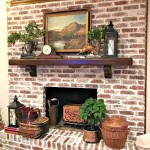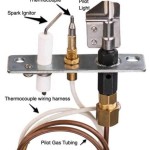Tempered Fireplace Glass Replacement: A Comprehensive Guide
Fireplaces are focal points in many homes, providing warmth and ambiance. The glass doors that often accompany them serve a dual purpose: enhancing aesthetic appeal and providing safety by preventing sparks from escaping and reducing drafts. However, fireplace glass can become damaged due to impact, excessive heat exposure, or age. When this occurs, replacing the glass with tempered glass is crucial to maintaining the safety and functionality of the fireplace. This article provides a comprehensive overview of tempered fireplace glass replacement, covering its importance, the process involved, factors to consider, and best practices.
Understanding Tempered Glass
Tempered glass, also known as safety glass, undergoes a heat-treating process that makes it significantly stronger than standard annealed glass. This process involves heating the glass to a high temperature and then rapidly cooling it. This rapid cooling creates compressive stress on the surface of the glass, while the interior remains in tension. This differential stress distribution imparts exceptional strength and durability to the glass. As a result, tempered glass is approximately four to five times stronger than annealed glass of the same thickness.
The most important characteristic of tempered glass in the context of fireplace safety is its shattering behavior. Unlike annealed glass, which breaks into large, sharp shards, tempered glass shatters into small, relatively harmless pieces. This characteristic significantly reduces the risk of serious injury should the glass break due to impact or thermal stress. This is the primary reason why tempered glass is mandated for fireplace doors and other applications where safety is a paramount concern.
In the context of fireplace glass, tempered glass is specifically designed to withstand high temperatures associated with the flames. While it's heat resistant, it isn't heatproof. Excessive and prolonged exposure to extreme temperatures can still cause the glass to weaken or even shatter. Therefore, proper fireplace maintenance and usage are essential to prolonging the life of the tempered glass.
Why Tempered Glass is Essential for Fireplaces
The use of tempered glass in fireplaces is not merely a preference; it is a crucial safety measure mandated by building codes and regulations in many jurisdictions. The rationale behind this requirement stems from the inherent risks associated with open flames and high temperatures. The following points highlight the importance of using tempered glass specifically for fireplace applications:
Safety: The primary reason for using tempered glass is safety. As mentioned earlier, the shattering behavior of tempered glass significantly reduces the risk of serious injury. Should the glass break due to impact, thermal stress, or other factors, it will crumble into small, mostly harmless pieces, minimizing the potential for cuts and lacerations.
Heat Resistance: Tempered glass is designed to withstand the high temperatures generated by a fireplace. While it is not impervious to heat damage, it is significantly more resistant than annealed glass, which is likely to crack or shatter under similar conditions. This heat resistance helps prevent premature failure of the glass and maintains the integrity of the fireplace enclosure.
Spark Protection: Fireplace glass serves as a barrier to prevent sparks, embers, and ash from escaping the firebox. This barrier is essential to prevent potential fire hazards, such as igniting nearby carpets, furniture, or other flammable materials. Tempered glass provides a reliable barrier, ensuring that the fire remains contained within the designated area.
Efficiency: Fireplace glass doors can improve the heating efficiency of a fireplace by reducing drafts and preventing heat loss up the chimney when the fireplace is not in use. The glass creates a more controlled burning environment, allowing for better heat retention and distribution into the room.
Aesthetics: Beyond safety and functionality, fireplace glass doors also enhance the aesthetic appeal of the fireplace. They provide a clear view of the flames while adding a touch of elegance to the room. Replacing damaged or unsightly glass can significantly improve the overall appearance of the fireplace and its surroundings.
The Tempered Fireplace Glass Replacement Process
Replacing tempered fireplace glass can be a straightforward process, but it requires careful attention to detail and adherence to safety precautions. The following steps outline the general procedure for replacing tempered glass in a fireplace door:
Preparation: Before starting the replacement process, gather the necessary tools and materials. These typically include a screwdriver (appropriate for the screws holding the door frame together), pliers, a putty knife or scraper, safety glasses, gloves, and the new tempered glass panel. Ensure the fireplace is completely cool before beginning any work.
Removal of the Old Glass: Carefully remove the fireplace door from its hinges and place it on a flat, protected surface, such as a workbench or a drop cloth. Use the screwdriver to remove the screws or fasteners holding the door frame together. Gently separate the frame components to expose the old glass panel. If the old glass is cracked or broken, exercise caution to avoid injury when handling the pieces. Use gloves and eye protection during this step.
Cleaning the Frame: Once the old glass has been removed, thoroughly clean the frame to remove any debris, old sealant, or remnants of broken glass. Use a putty knife or scraper to carefully remove any adhesive or sealant that may be clinging to the frame. A clean frame will ensure a proper seal and prevent any future problems with the new glass installation.
Installing the New Glass: Carefully position the new tempered glass panel into the frame. Ensure that the glass is properly aligned and seated within the frame. Some frames may require the use of glass retainer clips or glazing points to secure the glass in place. If necessary, apply a bead of high-temperature silicone sealant around the edges of the glass to create an airtight seal and prevent rattling.
Reassembling the Frame: Reassemble the door frame components, carefully tightening the screws or fasteners. Ensure that the frame is securely fastened and that the glass is properly supported. Avoid over-tightening the screws, as this could damage the frame or the glass. Check that the glass sits securely and that the entire structure feels stable.
Reinstalling the Door: Once the frame is reassembled, carefully reinstall the fireplace door onto its hinges. Ensure that the door swings freely and closes securely. Inspect the door for any gaps or misalignment and make any necessary adjustments.
Factors to Consider When Replacing Fireplace Glass
Several factors should be carefully considered when replacing tempered fireplace glass to ensure a successful and safe installation:
Glass Thickness: The thickness of the replacement glass is crucial. It should match the original glass thickness to ensure proper fit and heat resistance. Using glass that is too thin may compromise its structural integrity and heat resistance, while glass that is too thick may not fit properly within the frame. Consult the fireplace manufacturer's specifications or measure the original glass to determine the appropriate thickness.
Glass Dimensions: Accurate measurements of the glass are essential for a proper fit. Measure the height and width of the opening in the door frame where the glass will be installed. It is recommended to have a professional measure if you are uncomfortable undertaking this task. Provide these measurements to the glass supplier to ensure that the replacement glass is cut to the correct size.
Glass Type: Ensure that you are using tempered glass specifically designed for fireplace applications. Regular glass will not withstand the high temperatures and may shatter, posing a safety hazard. Verify that the replacement glass meets or exceeds the industry standards for heat resistance and safety.
Sealing: Proper sealing is critical to prevent air leaks and ensure the efficiency of the fireplace glass doors. Use a high-temperature silicone sealant specifically designed for fireplace applications. Apply the sealant carefully and evenly around the edges of the glass to create an airtight seal. This sealant will help to keep the glass in place and prevent drafts.
Professional Installation: While replacing fireplace glass can be a DIY project, it may be prudent to hire a professional, especially if you are not comfortable working with glass or if the fireplace door has a complex design. A professional installer has the experience and expertise to ensure that the glass is properly installed and that all safety precautions are followed.
Best Practices for Maintaining Fireplace Glass
Proper maintenance of fireplace glass is essential to prolong its life and maintain its appearance. The following best practices can help keep your fireplace glass in optimal condition:
Regular Cleaning: Clean the glass regularly to remove soot, ash, and other debris that can accumulate on the surface. Use a specialized fireplace glass cleaner or a mixture of vinegar and water to clean the glass. Avoid using abrasive cleaners or scouring pads, as these can scratch the glass. Always ensure the fireplace is cool before cleaning.
Proper Ventilation: Ensure that the fireplace is properly ventilated to prevent excessive buildup of heat and smoke. Open the damper fully before starting a fire and maintain adequate airflow throughout the burning process. This ventilation helps to prevent the glass from overheating and reduces the accumulation of soot.
Avoid Overloading: Do not overload the fireplace with too much wood. Overloading can create excessively high temperatures that can damage the glass and other components of the fireplace. Burn wood of appropriate size and quantity, following the fireplace manufacturer's recommendations.
Inspect Regularly: Regularly inspect the glass for any signs of cracks, chips, or other damage. If you notice any damage, replace the glass immediately to prevent further deterioration and potential safety hazards. Address any issues promptly can prevent more costly repairs down the line.
Use Seasoned Wood: Only burn seasoned (dry) wood in your fireplace. Green or wet wood produces more smoke and creosote, which can contribute to the buildup of soot on the glass and increase the risk of chimney fires. Seasoned wood burns cleaner and more efficiently, reducing the maintenance required for the fireplace and its components.

8 3 4 X 19 Inches Polished Tempered For Bi Fold Fireplace Glass Replacement

Tempered Fireplace Door Glass In Clear Finish

Fireplace Glass Replacement Lancaster Paint

8 1 X 21 Inches Polished Tempered For Bi Fold Fireplace Door Glass Replacement

Fireplace And Wood Burning Stove Glass Replacement

Fireplace Glass Replacement Wood Stove Gas

Tempered Fireplace Door Glass In Grey

Fireplace Glass Replacement Lancaster Paint

Fireplace Glass Replacement Me And My

Uniflame Gregory Cabinet Style Fireplace Doors With Smoke Tempered G








